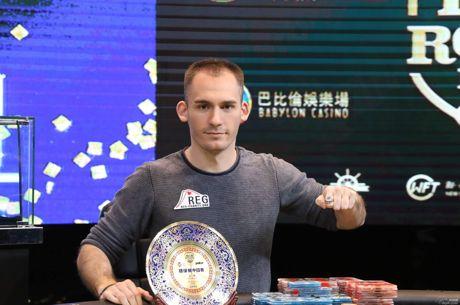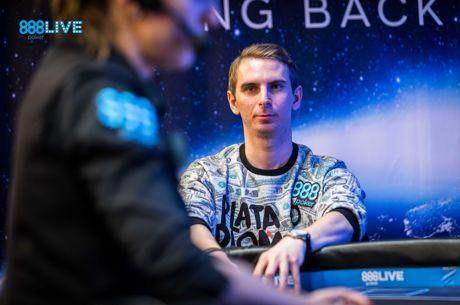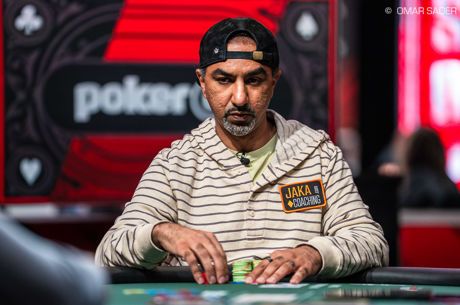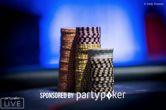Dominik Nitsche Analyzes SHRB China Bluff Against Daniel Cates
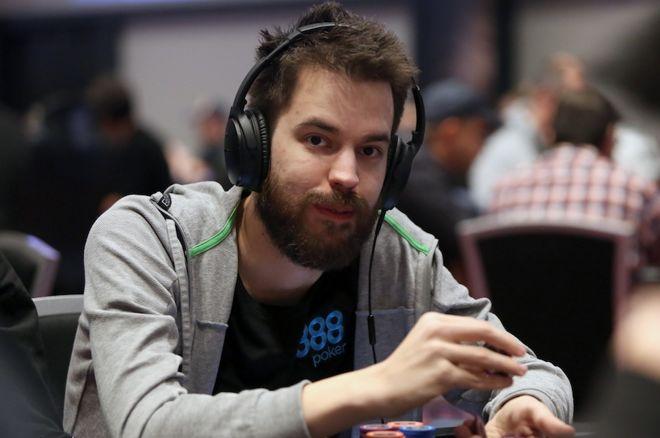
The HK$2,100,000 buy-in Super High Roller Bowl China recently played out in Macau where Justin Bonomo topped a 75-entry field to win a first prize worth over $4.8M USD. 888Poker Ambassador Dominik Nitsche finished fourth in the event for a nearly $1.67M cash. Below Nitsche analyzes a Day 1 hand in which he attempted a bluff versus Daniel Cates.
This hand came from about halfway through Day 1 in the Super High Roller Bowl China. I was at a tough table with Daniel Cates and several other very strong players including Dan Smith who were very tricky and tough to play against.
In this hand I was up against Cates who is obviously one of the best players in the world. It began with Dan raising the button to 2x the big blind. At the time we were 60 big blinds deep, and I called from the big blind with A?2x-offsuit. It was a pretty standard call against a button-raising range, and there was no need to be three-betting.
Worth noting here is that Dan is opening a pretty wide range from the button. He comes from a cash game background, and my estimate of the situation was that he'd be opening roughly 60 percent of his hands here (there was a strong player in the small blind as well).
The flop came 10x8?7?. Obviously I checked (I'm never leading here), and Dan checked fairly quickly behind. It's a board where he's not going to be continuation betting a lot of hands, but he would c-bet some hands. Basically I'd expect him to bet a lot of tens or better and to check a lot of middle-pair hands.
I'd also expect him to check Jx10x and a few flush draws, but not too many at this point. The way most people play, they don't tend to check flush draws as often as they should, and I do think they should check with flush draws some of the time. I actually had the A? in my hand, which meant he couldn't have the ace-high flush draw (with which I think he would have probably bet to build a pot).
I was already thinking before the turn came that if it were a spade, and especially a high spade �� say the K?, Q?, or J? �� the higher the card, the better that would be for me, because I would have expected him to try to build a pot with the bigger flush draws.
As it happened, the turn was the K?, making the board 10x8?7?K?. My first thought was that was a card I didn't want to be betting very often, but at the same time I did have A?2x so I did think I should bet. While I could check-call, that would be fine, but I think there were plenty of better hands with which I could check-call, like A?8x or A?7x (which would have given me a pair). Those would be more reasonable hands with which to check-call. I could also definitely bet a lot of two-pair hands or made flushes. So I decided to bet roughly 85 percent of the pot, and Daniel called.
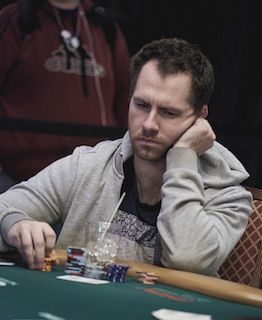
The river was an offsuit 3x. At this point, I don't expect him to have an advantage in a way where he has more one-pair hands. He has a king quite often, which in my opinion should be a bluff-catcher against my bet, because I'm never betting worse than a king. If I have ace-ten, I'm not ever betting the turn that big. I think a ten for the most part is just a check.
So either I have two pair or better in the end. I can have Jx9x and all combinations of 9x6x as well. It's important to know that my bottom hands in some way must be two pair or better. I'm not even sure I could be betting a hand such as 8x7x-suited. I believe that might be the stone bottom of my range that I should be betting.
I decided I should have two bet-sizings �� one where I bet my really strong two-pair hands, and one where I bet my flushes and straights. With those latter hands, ones that I think are effectively the nuts, I want to bet more than the size of the pot, because I want to force him to bluff-catch. When he's going to show up there with a hand like 10x9x with a spade, or KxXx with a spade, I want to make him bluff-catch.
It's very important for me that I hold the A? in my hand, I think, because I could conceivably play a lot of nut flushes and nut flush draws this way. (The K? being on the board is important as well.) But the A? in my hand is a good bluff, because first of all I bet the turn, and when I bet the turn I don't always have the A?. I bet the A? on the turn only when I have a 2x, a 3x, a 4x, or a 5x as my second card.
Actually a lot of people might look at this hand and think that I always bluff with the A?, and therefore you can call me because I'm simply bluffing too much. That would be correct if I were bluffing with every A?Xx hand. But if you think about which A? I bet, I actually don't have that many of them.
The river brings a 3x in this instance, and so at this point I would decide I wouldn't need to bluff with A?3x because I do gain some showdown value and could beat some hands like AxJx or AxQx and other AxXx hands with a spade.
But on the river I decide I would like a hand such as A?2x, A?4x, A?5x, and possibly even A?6x with which to bluff. A?6x is probably the worst one to bluff, because I would block some of the hands I'd expect to fold like 7x6x or Kx6?. Basically I decide to pick an A?Xx hand with which to bluff that does not block any of his folds.
If I bet roughly one-and-a-half times the size of the pot here, he's going to have to fold a lot of hands, because I represent flushes so incredibly well. That's my goal with that bet size �� to represent flushes, and possibly straights.
So that's what I did �� I bet one-and-a-half times the size of the pot. And he called me with 9x8x without a spade blocker, which I think is a clear mistake as he didn't block any of my flush cards. If he had 9x8x with one spade, that would be a better call as he could reduce the chance of my having a flush by quite a bit.
When you're bluff-catching, it's especially important to be aware of what your opponent is trying to represent and then block that card accordingly. If you just always bluff-catch, because you think, oh, you know, this guy has so many A?Xx hands, you have to think about which A?Xx hands could make that move as well. Good players are not just going to take the A? and run with it �� they are also going to look at their second card. Because if you don't look at your second card, you're going to show up with too many bluffs.
That's one lesson to take away from this hand. When using the nut-flush blocker, make sure you're using it accordingly. A good way to keep your ranges in order and not overbluff is to stick with the A?Xx hands (such as in this example) that don't have any showdown value and the ones don't block any of their folding range as well.
Also you have to keep in mind that you sometimes want to check those hands on the turn as well so that you have the A? when the river comes a spade, so that way you also protect it. It's not just about the bluff, but it's also about protecting your range on the turn when it goes check-check. If you always bet the A? on the turn and the river comes a spade, then you're basically in a terrible situation.
You need to make sure your game plan is very well thought out across the board. In this hand for me, a very simple way to decide what to do was to say I was going to bet my worst A?Xx hands because if I didn't have a pair with them, I wasn't going to take them to showdown. And if I have a pair with them I was going to take them to showdown, so in those cases I think I should be checking more than betting.
888poker Ambassador Dominik Nitsche has amassed over $13.6 million in lifetime tournament earnings to date, earning multiple titles on various tours. Among those wins are four in World Series of Poker bracelet events, including one in the �111,111 buy-in 2017 World Series of Poker Europe High Roller for One Drop.

